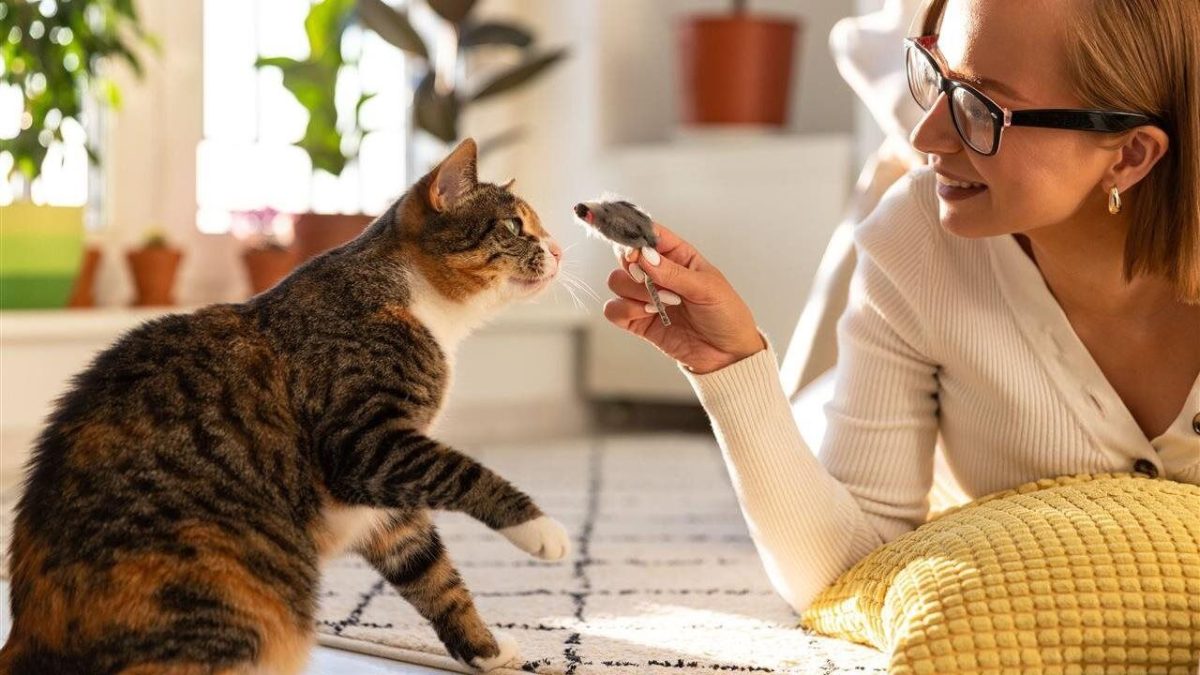(BPT) – Play is instrumental for pets’ overall health and physical wellbeing. However, many cat lovers may not realize that there are positive and negative ways to engage cats in play.
“Positive play can lower pets’ cortisol levels, influence brain development and help them gather information to understand boundaries and different ways of communicating,” said Purina Animal Enrichment Specialist Alex Johnson.
If you’re craving new ways to interact with your cat, Johnson shares additional insights about the value of play, plus do’s and don’ts to maximize your time together.
DO create routines — Cats anticipate what will happen at certain times of day. Try giving your cat 15 minutes of undivided attention at the same time every day, focusing on your cat’s cues. Pet your cat and speak in a calm voice. Connection is the goal, but some cats prefer just hearing your voice as they sit nearby.
DO reinforce positive behavior — Johnson recommends praising good behavior with treats like new Friskies Playfuls, uniquely shaped to roll so cats can have fun with their treats. For example, if they like to scratch furniture, redirect the behavior by giving them a toy or object that’s acceptable to scratch.
DO provide mental stimulation — If your cat seems bored, Johnson suggests rotating toys or introducing new activities:
- Copycat: Mirror your cat’s actions like you’re playing Simon Says, batting Friskies Playfuls with them like you’re playing catch. Seeing things from their perspective fuels interactive play, creating new ways to connect with your cat.
- Obstacle fetch: Set up items like scrunched-up paper, paper bags or boxes, then toss a treat among the items to encourage cats to seek out the treat. This activity uses their hunting skills, encouraging mental stimulation by providing obstacles they must maneuver around to get their reward.
- Lost marbles: Cut holes a bit bigger than your cat’s arm on the top and sides of a box. Cut 2-3 holes at floor level, as this will be where the treats come out. Place a few Friskies Playfuls treats and other movable objects inside (balled-up paper, toys, ping-pong balls), letting your cat bat them around to push the treat out of one of the bottom holes. This problem-solving activity gets your cat thinking and activates trial and error.
DON’T forget to encourage their instincts: Cats love exploring, so making blanket forts or repurposing boxes can be great ways to engage with them. They also love exploring textures and smells, so adding different materials like an old T-shirt or packaging paper in the box or blanket fort each week can help keep them entertained.
DON’T betray your cat’s trust: Cats’ relationships are built around trust, which is vital for their sense of safety. Some social media trends prompt cat owners to seek reactions from cats as a means for entertainment, but this could be damaging to the bonds cats have with their owners.
“A great test to check if you’re crossing a line with your cat is to ask yourself if you would do this to a child or a baby,” Johnson says. “If an adult plays pranks, deliberately annoys, hurts or frightens a child — that can cause confusion, stress and feelings of betrayal, and the same concept applies to cats.”
DON’T overstimulate: Watch for signs of agitation: whipping their tail back and forth, biting, hissing or flattening their ears. If you see these signs, give them space. Avoid raising your voice or punishing your cat for being aggressive. While this may seem a logical way to teach your cat to ‘behave,’ it increases your cat’s stress in an already stressful situation — and could increase aggressive behavior.
Following these guidelines, you’ll learn what works best for encouraging active, positive play with your cat, and you’ll likely have just as much fun as they do!
Learn more about Friskies Playfuls on Purina.com/friskies/cat-treats.









